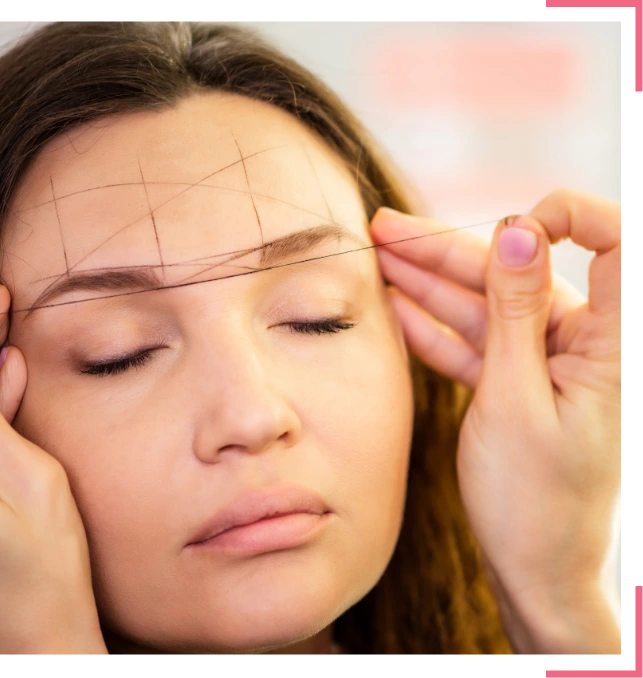Cultural Importance of Brow Threading: A Closer Examination at Heritage
Eyebrow threading, an ancient beauty technique with origins in historical practices, has seen popularity in recent years as a preferred method for attaining well-defined eyebrows. This technique involves using a thin thread to lift and remove hair from the follicle, resulting in sharp lines and precise shaping. While many people are drawn to eyebrow threading for its efficacy and the minimal irritation it poses, the practice carries a deep cultural significance that goes beyond just looks.
Deriving in countries such as India, Iran, and the Middle East, threading has been a historical hair removal method for ages. It embodies not just a standard of beauty but also a cultural heritage, transmitted through generations. As more people recognize its benefits and adopt it in different regions of the world, eyebrow threading serves as a bridge that connects individuals to their heritage while allowing for self-expression in their beauty routines. In this article, we will explore the cultural significance of eyebrow threading and celebrate its enduring charm in modern culture.
Historical Origins of Eyebrow Threading
Threading is believed to have started in the Middle East and South Asia, with roots tracing back more than a thousand years ago. Historic practices in these regions saw ladies using threads to form their eyebrows, a technique that was often passed down through generations. This tradition was not just about appearance but also represented a form of societal identity, demonstrating the skill and skill of practitioners who excelled at the art.
As this tradition spread, it evolved into a social tradition, often performed in beauty shops and homes where ladies gathered to socialize. In the Indian subcontinent, for example, threading became a crucial aspect of bridal rituals, with newlyweds receiving extra attention to their brows before the ceremony. The practice was regarded as a way to enhance aesthetics and groom the appearance, aligning with societal standards of femininity.
In recent decades, eyebrow threading gained worldwide recognition, especially in Westernized countries, as a soft and precise alternative to other hair removal techniques. This globalization of the technique saw it being adopted by diverse communities, highlighting the beauty of cultural while retaining its traditional importance. Today, threading represents more than just a beauty treatment; it embodies the rich heritages and customs from which it came.
Cultural Practices and Significance
Threading eyebrows is deeply rooted in the cultural practices of various areas, particularly in the Indian subcontinent and the Middle East. Historically, this technique of hair removal is believed to have originated in traditional India, where it was used not only for beautification purposes but also as a ceremonial practice. Families often pass down the technique through generations, making it a valued art form that reflects cultural identity. The importance of eyebrow threading extends beyond appearance, symbolizing a link to tradition and communal identity.

In many cultures, eyebrow threading is closely linked to womanhood and social standing. Women often partake in this ritual as a means of preparation for significant life events, such as marriages or festivals. The method itself typically involves a skilled practitioner, known for their skill and artistry, creating a serene and reverent atmosphere. This collaborative experience fosters a sense of community, where women come together to exchange stories and encourage one another while participating in self-care.
Additionally, eyebrow threading is increasingly recognized in contemporary beauty standards worldwide, transcending its cultural origins. Its rise in popularity has led to a fusion of traditional techniques with modern beauty standards. jyotisalon.com growing appreciation for diverse beauty traditions and highlights the necessity of maintaining historical heritage in a connected context. As eyebrow threading becomes more mainstream, it continues to honor its significant roots while adapting to the changing landscape of beauty rituals.
Contemporary Adaptations and Trends
In the past few years, eyebrow threading has experienced a resurgence in fame, especially among younger generations who seek natural and exact grooming methods. Salons focusing in threading often merge classic techniques with contemporary aesthetics to create a friendly atmosphere that appeals to a varied clientele. The rise of social media has also had a significant role in promoting eyebrow threading, with beauty influencers demonstrating the art of threading and its benefits through guides and transformation images. This visibility has fueled interest, transforming eyebrow threading into a sought-after beauty ritual.
Furthermore, many beauty establishments are evolving by including threading as part of a wider range of beauty services. This change reflects a growing understanding of the importance of keeping a cohesive beauty routine. Clients can now experience threading alongside services such as facials, waxing, and skincare consultations, creating a well-rounded experience that enhances individual care. Moreover, mobile beauty services have emerged, permitting professionals to bring threading directly to clients at home or in convenient locations, which highlights the versatility and accessibility of this classic practice.
Focus around sustainability and green practices has also influenced the eyebrow threading industry. More salons are using organic threads and natural products to align with consumers' growing concerns about health and the environment. This movement not only promotes a more conscientious approach to beauty but also appeals with those who value ethical practices in the beauty industry. As eyebrow threading continues to evolve, it intertwines modern values with its rich cultural roots, ensuring its place in contemporary beauty culture.